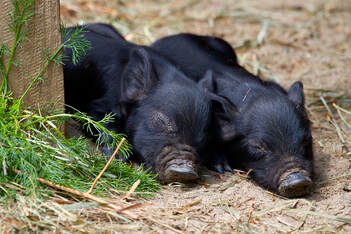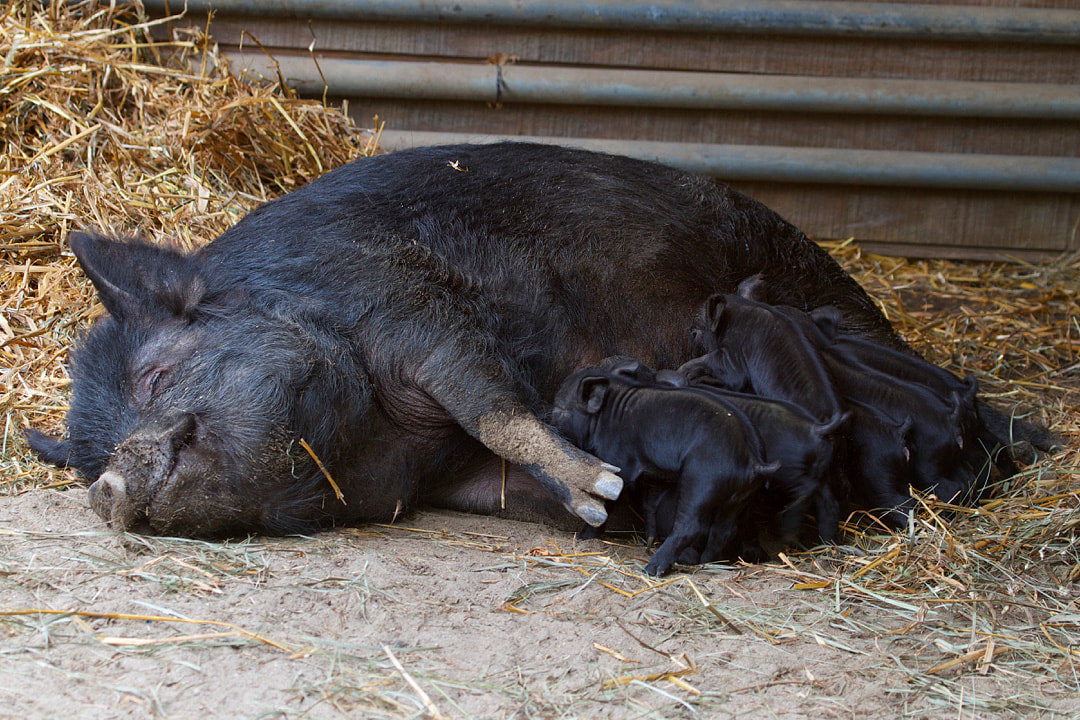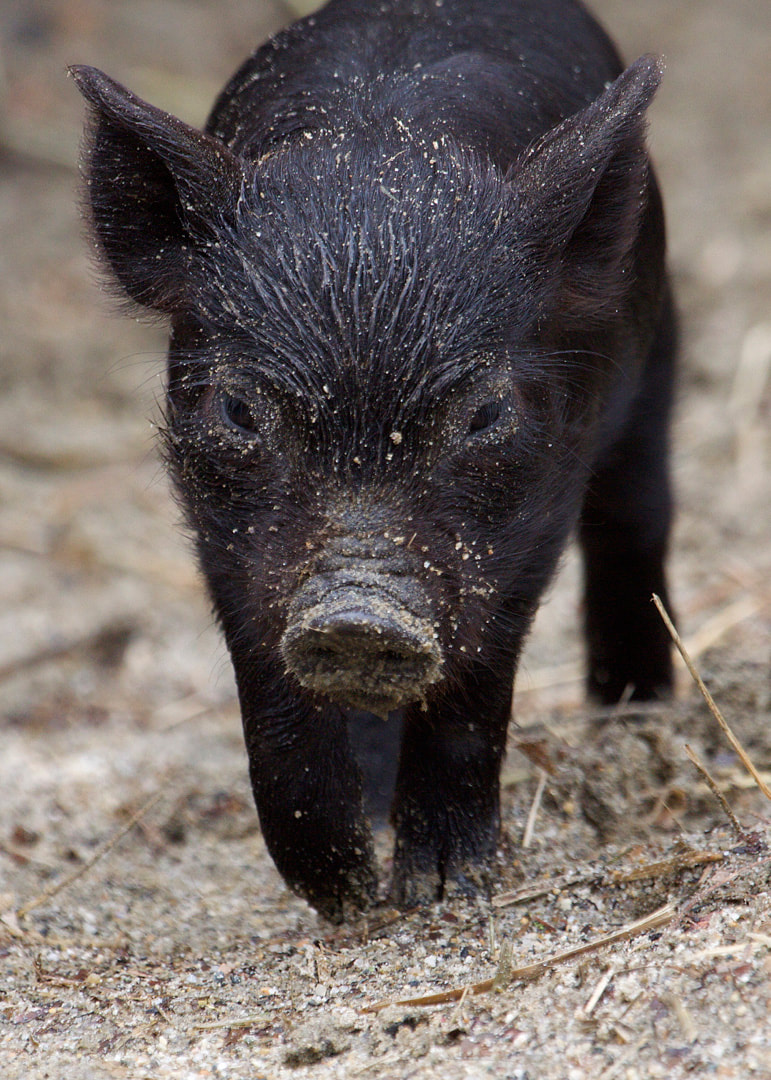Guinea Hog (Sus scrofa scrofa)
|
Physical Description: Guinea hogs are large and square bodied with bristly red hair. They have long tails and pointed ears, but today they are domesticated to be smaller with often black hair. They grow to a height of 21-24 inches and weigh 150-300 lbs. They have an advanced sense of taste and can quickly identify objects by tasting them. They are quick learners and have a substantial memory.
Habitat: Guinea Hogs are domesticated and live on farms around the world. Range: Originally from West Africa, Guinea hogs were brought to farms throughout Africa, Europe, and the United States. Diet: They are hardy grazers and foragers. They eat shrubs, weeds, bird eggs, snakes, mice, grasshoppers, roots, tubers and even manure. Lifespan: The average lifespan is unknown for this domesticated species. Social Structure: They live in herds of varying sizes on farms. Females will give birth to a litter of 6-10 young1 who she will nurse for the first few months of life. Status: As a domesticated species, they are not classified by the IUCN Red List. They are classified as threatened by the Livestock Conservancy1. Other: The Guinea Hog can be found in the New England Farmyard at the zoo! |









